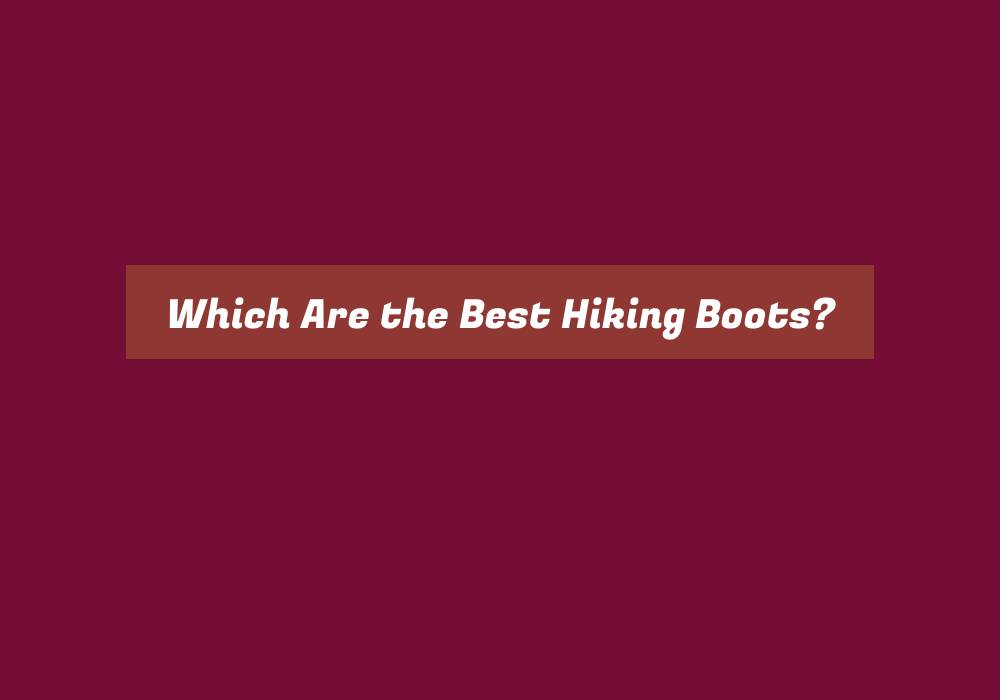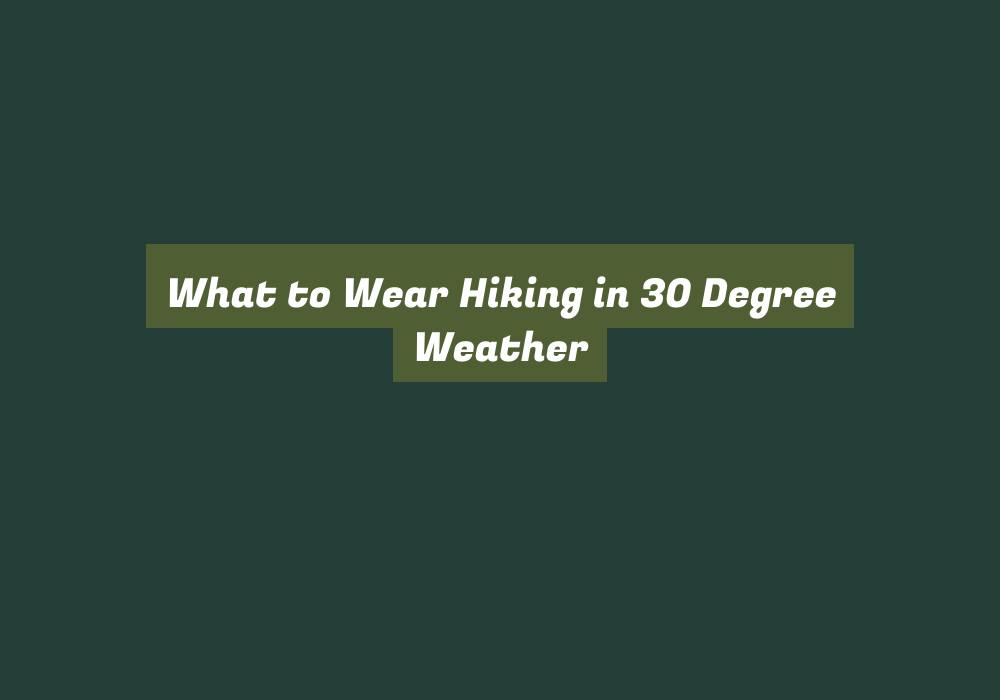When gearing up for hiking adventures, choosing the right footwear is a critical decision. With so many hiking boot options on the market, narrowing down the best models for your needs can be challenging. This definitive guide covers how to select ideal hiking boots based on terrain, fit, performance features, and intended use. Read on to discover our top boot picks to elevate your hiking comfort and safety.
How to Choose Hiking Boots
Consider these key factors when selecting hiking boots:
Types of Hiking Boots
- Day hiking – Low-cut and lightweight
- Backpacking – Mid-cut with stiff midsole for multi-day trips
- Mountaineering – Maximum ankle support and stiffness for rugged terrain
Match the boot type to your most common hiking needs.
Weight
Lighter boots allow you to hike farther and faster over the day. Heavier boots provide stability for long miles with a backpack.
Traction and Grip
- Deep and aggressive lugs for muddy, uneven ground
- Sticky rubber outsoles for dry rock and packed dirt
- Softer compounds grip wet surfaces
Evaluate boot soles for your frequently encountered trail types.
Waterproofing
- Waterproof membranes like Gore-Tex keep feet dry
- Water-resistant materials shed light moisture
- Add waterproofing sprays for any boots in very wet conditions
Choose boots with the level of water protection you expect to need.
Durability and Abrasion Resistance
Look for sturdy stitching, protected toes, and quality materials in high-wear areas. Full-grain leather stands up to years of use.
Prioritize longevity for extended backcountry use.
Fit and Sizing
Try boots on with hiking socks. Heels should be locked in place without a lift. Toes lightly touch the front when standing.
Test sizing up a half or full size if between sizes.
Top 5 Hiking Boot Picks
Based on expert recommendations and customer reviews, here are the top hiking boots to consider:
1. Salomon Quest 4D 3 GTX
- Backpacking design
- Gore-Tex waterproofing
- Protective toe cap
- Precise foothold and traction
Excellent balance of support, comfort, and grip make this a top all-around hiking boot.
2. Oboz Bridger Mid BDry
- Athletic fit
- BDry waterproof membrane
- Molded EVA midsole for cushion
- Customizable O Fit insole
This midweight hiker stabilizes feet while keeping them comfortable all day.
3. Lowa Renegade GTX Mid
- Supportive backpacking boot
- GORE-TEX liner for guaranteed waterproofing
- Long-lasting, sturdy nubuck leather
- Vibram rubber sole provides traction
The Renegade GTX Mid is built to last through years of heavy use on rough terrain.
4. KEEN Targhee III
- Roomy toe box
- KEEN.Dry waterproofing
- Built-in heel lock
- Protective rubber toe bumper
The Targhee III offers legendary KEEN comfort and stability. A great value all-purpose boot.
5. La Sportiva Nucleo High II GTX
- Technical mountaineering design
- Vibram outsole with self-cleaning lugs
- Molded shank for torsional rigidity
- Excellent climbing and scrambling performance
The Nucleo High II GTX provides elite traction and agility for off-trail adventures.
How to Choose Hiking Boots by Terrain
Match boot features to the terrain you expect to encounter:
Rocky, Uneven Trails
Look for aggressive deep lugs for gripping loose surfaces. Protective toe caps shield from stubbed toes. Shanks stabilize feet on awkward angles.
Recommendations: Salomon 4D Quest GTX, Lowa Renegade GTX
Sand and Packed Dirt
Low-profile directional lugs shed debris well. Sticky Stealth rubber provides grip without grabbing dirt. Focus on debris-shedding outsoles.
Recommendations: Oboz Sawtooth II Low, Merrell MQM Flex 2 GTX
Wet and Muddy Trails
Prioritize deep waterproofing like Gore-Tex liners. Full waterproof leather withstands moisture too. Lugs release mud buildup. Rinse boots to prevent soak-through.
Recommendations: KEEN Targhee III Waterproof, Salomon X Ultra 3 Mid GTX
Snow and Ice
Look for lug designs that grip the snow. Insulated, waterproof boots keep feet warm and dry. Crampon-compatible boots excel in icy conditions. Traction aids like MICROspikes attach when needed.
Recommendations: Salomon Toundra Pro CSWP, Sorel Caribou Reserve
Off-Trail Scrambling
Ankle support and torsional rigidity provide stability over uneven ground. Sticky rubber adheres to rock. Protective rands guard from scuffs and abrasion. Lightweight boots enhance agility.
Recommendations: La Sportiva FC 4.0 GTX, Arc’teryx Acrux TR GTX
Choosing Hiking Boots by Fit
Dial in the ideal fit for your foot shape:
Narrow Feet
Salomon, Vasque, and Lowa boots suit narrower feet best. Leather models conform through the break-in period. Avoid loose sloppy fits which cause blisters.
Wide Feet
Look for wide-size options from KEEN, Oboz, and Altra. Soft leathers and synthetics accommodate wider feet. Custom orthotics provide a precise fit.
High Volume Feet
If you have high-volume feet, look for adjustable lacing systems to customize the fit. Upper designs with bellowed tongues expand to allow more space.
High Arches
Find boots with molded midsoles to support high arches, like Oboz models. Replace insoles if they lack arch contour. Heat moldable options are customized to your feet.
Flat Feet
Rigid midsoles stabilize flat feet and prevent overpronation. Look for shanks that resist torsional flex. Orthotic inserts with arch support optimize comfort.
Buying Recommendations by Use Cases
Day Hiking Boots
Low-cut light hikers flex naturally while providing toe protection. Models like Salomon X Ultra, Merrell Moab 2, and Oboz Sawtooth II.
Backpacking Boots
Mid-weight backpacking boots stabilize heavy loads over miles with ankle support and shank rigidity. Top picks: Asolo TPS 535, Lowa Renegade, Salomon Quest 4D.
Winter Hiking Boots
Insulated shafts, waterproofing, and full shanks provide warmth and prevent slippage on ice/snow. Try Sorel Caribou, KEEN Durand Polar, or Salomon Toundra.
Mountaineering Boots
The stiffest, most protective boots for extended climbs and difficult terrain. See La Sportiva Nepal Cube, Scarpa Mont Blanc Pro, and Lowa Civetta.
Conclusion
With so many hiking boot options today, take the time to evaluate your personal needs and preferences to discover the ideal pair. Considering the terrain, fit, required performance features, and intended use will guide you to boots that enhance comfort, support safety, and match your adventurous pursuits. Break boots in gradually before hitting the trails. The right hiking boots keep you moving confidently across all kinds of miles and trails.
Frequently Asked Questions About Hiking Boots
What are the most comfortable hiking boots?
Top comfort-focused hiking boot brands include Salomon, Oboz, and KEEN, known for precise athletic fit, customizable support, ample toe room, and cushioned midsoles.
How do I choose hiking boots for wide feet?
Look for boots offering wider sizes and roomy toe boxes like KEEN, Altra, and Salomon. Softer leathers and synthetic fabrics also suit wider feet. Custom orthotics provide a personalized fit.
What are the best lightweight hiking boots?
Top lightweight boots for fast hiking and day trips include the Salomon X Ultra 3, Merrell Moab 2, and Oboz Sawtooth II Low. Key advantages are nimble mobility and hiking efficiency.
Which boots are best for backpacking?
Supportive backpacking boots with stiff midsoles like the Asolo TPS 535, Lowa Renegade, and Salomon Quest 4D carry heavy loads over uneven terrain the best. Ankle support and rigidity provide stability.
What are the best hiking boots for plantar fasciitis?
Look for stiff supportive shanks and molded midsole contours that support the arch and prevent overpronation. Oboz and Superfeet inserts also help. A good fit is critical for plantar fasciitis pain relief.
Do I need waterproof hiking boots?
Waterproof boots keep feet dryer but can trap sweat, so breathability is important too. For very wet conditions, waterproofing is highly recommended. Otherwise, water-resistant boots work for occasional moisture during day hikes.
How can I make my boots more comfortable?
Try custom orthotic insoles, heel pads, and tongue pads to fine-tune fit and support. Conditioning leather softens stiff boots during break-in. Adjusting laces, wearing better socks, and re-lacing also helps.
Can hiking boots be resolved?
Yes, local cobblers can replace worn outsoles on leather and some synthetic boots, saving the supportive uppers. Resoling costs $40-$80 but extends boot life at a fraction of replacement cost.
How do I waterproof my existing hiking boots?
Use sprays like Nikwax TX Direct or Gear Aid ReviveX to add water-repellency to worn boots. Wash and air-dry the boots fully first. Apply light coats, letting dry in between, and avoid pooling excess spray inside boots.
What are the best hiking boots for snow?
Top snow boots offer insulation, weatherproof shells, and aggressive lugs for traction like Sorel Caribou Reserve, Salomon Toundra Pro, and KEEN Durand Polar. Crampon compatibility and gaiters help in deep snow conditions.
How can I soften stiff new hiking boots?
Regularly apply leather conditioners like Nikwax to soften and break in stiff leather boots. Wear boots indoors to mold to your feet. Replace insoles lacking support. Slowly increase wearing time to gradually ease into new boots.
How should hiking boots fit?
Boots should fit snugly, with space for toes to lightly touch the front when standing still. Heels lock in place without lifting when walking. Break-in expands fit further. Order wide sizes as needed to get an ideal personalized fit.
How do I choose hiking boots for high arches?
Seeking out boots with molded EVA midsoles and supportive insertable orthotics will suit high arches best. Replace flimsy insoles in new boots if needed. Focus on arch and heel stability to prevent foot fatigue.
What do I do if my new boots give me blisters?
New boots should be broken in slowly. Cover hot spots with moleskin. Wider toe box designs like KEEN help prevent pinch blisters. Synthetic fabrics ease break-in versus stiff leather. Proper fit and sizing prevent excess friction leading to blisters.
Why do my feet hurt after hiking in new boots?
Sore feet after hiking in new boots means they need a better break-in period to adapt to your feet. Hot spots and lack of support lead to discomfort. Use more padding, adjust lacing, try inserts, and slow mileage increase to ease into full days of hiking.
How can I make heavy hiking boots more comfortable?
To lighten the feel of heavy-duty boots, replace shank inserts with flexible cushioned options like Superfeet. Lightweight orthotic inserts also customize fit and support. Staying conditioned for carrying weight keeps boots feeling lighter.
What causes hiking boot heel lift?
Boots with inadequate heel lock and ankle padding lead to heel lift when hiking downhill. It causes friction and instability. Try heel pads, locking lacing methods like heel lock, and sizing down for a performance fit to prevent heel lift when descending.
How do I choose between leather or synthetic hiking boots?
Leather is tough and long-lasting but requires a break-in. Synthetics are lightweight and comfortable instantly but durability can be lower. For multi-day backpacking, leather boots are recommended. For day hiking, synthetic boots work well and require less care.
What do I look for in winter hiking boots?
Key winter boot features are: waterproofing, insulated liners, a full shank for traction on snow/ice, tough water-resistant shell fabrics, abrasion-resistant toes, and removable insoles for adding thicker sock liners when needed.
You May Also Like

My name is David James I am an adventurous hiker based in California. Through this weblog, I percentage my passion for exploring nature’s wonders, documenting breathtaking trails and hidden gemstones.



